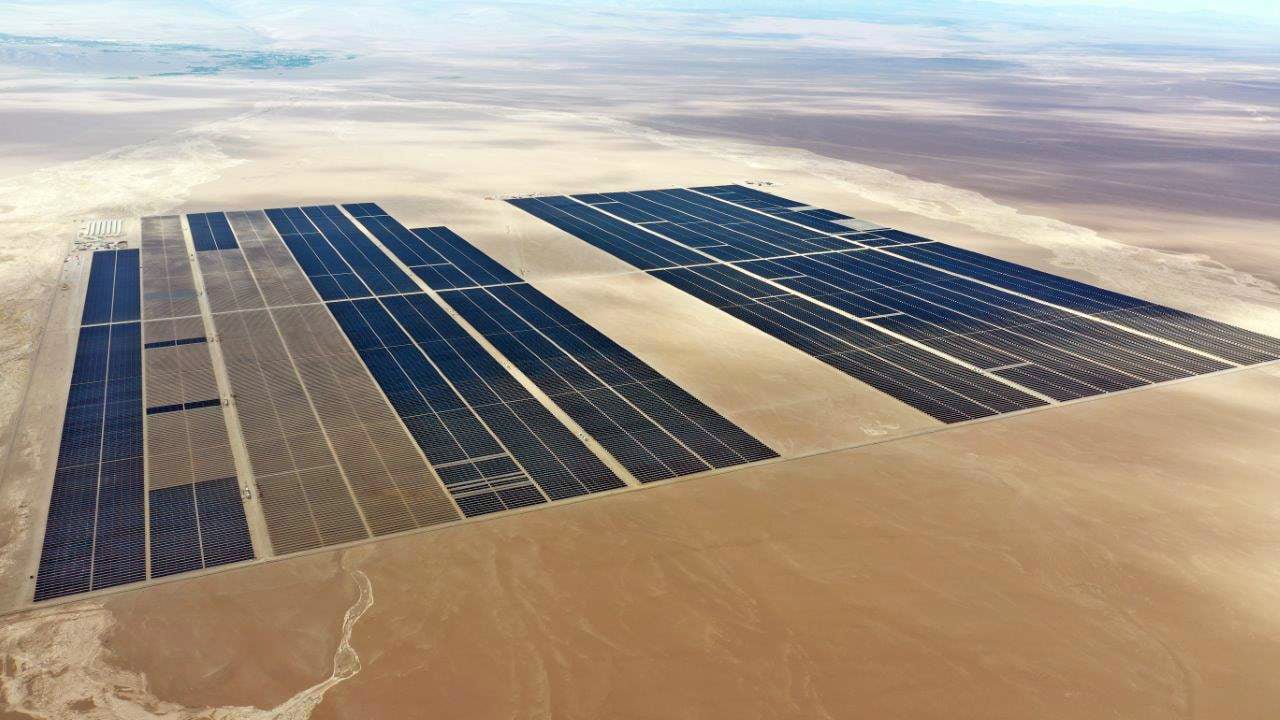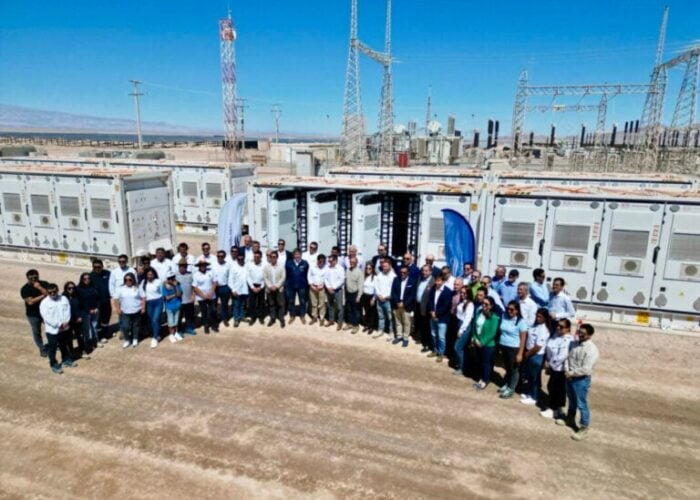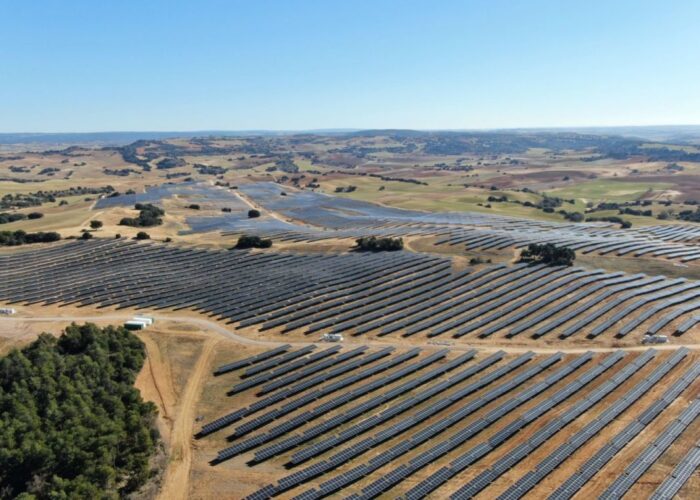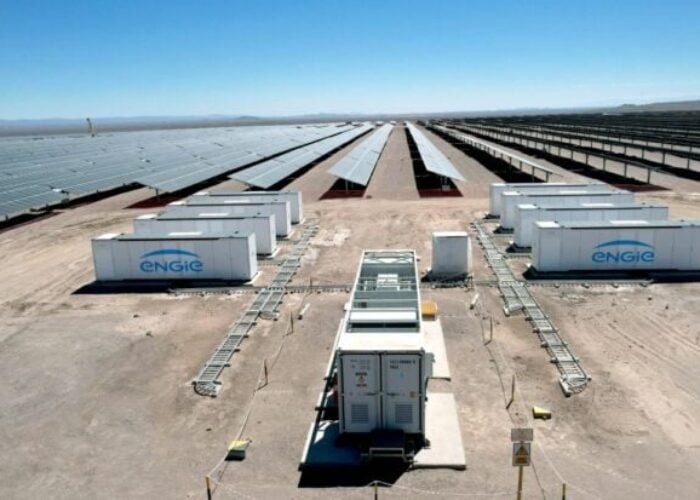
Project name: Atacama Solar
Location: Pica, Tarapaca, Chile
Unlock unlimited access for 12 whole months of distinctive global analysis
Photovoltaics International is now included.
- Regular insight and analysis of the industry’s biggest developments
- In-depth interviews with the industry’s leading figures
- Unlimited digital access to the PV Tech Power journal catalogue
- Unlimited digital access to the Photovoltaics International journal catalogue
- Access to more than 1,000 technical papers
- Discounts on Solar Media’s portfolio of events, in-person and virtual
Capacity: 170MW
Expected generation: 485,000MWh per year
Developer: Mytilineos
Asset owner: Sonnedix
Chile has emerged as one of the brightest hotspots in Latin America’s solar sector, helped by generating conditions so ideal one seasoned developer referred to them as “unmatched” when the results of a tender earlier this year were announced. Hundreds of megawatts of solar have been deployed in 2020, with industry stalwarts all vying for their share of the prize. That pace of development only looks set to accelerate after the aforementioned tender awarded 2.6GW of capacity and a follow-up competition, slated for next summer, will hand out gigawatts more.
One party to have witnessed first hand the rise and further rise of Chilean solar is Mytilineos, the Greek engineering, procurement and construction (EPC) company tasked with the development of the 170MW Atacama Solar Farm, belonging to independent power producer Sonnedix. The project is one of a number Sonnedix has in the country, with its total pipeline of projects at various stages of construction in the region topping 1GW.
But, amidst the rush to develop projects in Chile, the development of the Atacama Solar Farm, built near Pica, Tarapaca – with the Atacama Desert towards the north east of the region – has been far from straightforward.
Mytilineos signed the contract with Sonnedix in April 2019, with a notice to proceed issue on 3 September 2019. Construction started shortly after, only for works to be somewhat beset less than a month in. In October 2019, protests erupted in the country sparked primarily by an increase in fares for the subway in the capital of Santiago, but grew throughout the month as citizens rallied against spiralling inequality and increased privatisation. The situation escalated until Chile’s President Sebastián Piñera declared a 15-day state of emergency in Santiago before, on 25 October 2019, more than a million people in Santiago and thousands more across the country demonstrated, prompting swathes of the country’s cabinet to resign.
The protests triggered significant disruption to Chile’s infrastructure and Nikos Papapetrou, general manager of renewables and storage development at Mytilineos, says the protests sparked some concern as a result of constrained logistics in the country. However, any concern sparked by the riots would pale into insignificance just a few months later.
Chile: Solar’s LatAm hotspot
While other Latin American markets on solar’s radar may have cooled somewhat in 2020, especially Mexico, Chile has emerged as the leading destination, with the Atacama region of particular interest to many developers. Previous editions of PV Tech Power (23 and 24) have detailed not only the rise in prominence of Chile’s solar market, but how the Atacama region in particular has emerged as one of the most highly sought-after areas for solar development in the world. This summer, a raft of renewables heavyweights including EDF, Engie and Solarcentury were amongst the winners of a 2.6GW solar tender that represented a total investment value in excess of US$2.5 billion. Solarcentury bagged three projects with a total generating capacity of just over 1GW/963MWac and, once complete, those projects are expected to generate as much as 3,000kWh per year for each kWp deployed. This, the developer said, was attributable to Chile being an “unmatched” solar resource due to its location and altitude. “The land we have secured in this auction represents some of the best land in the world to develop solar as it combines great irradiance with cool temperatures,” Cristian Fuenzalida, business development senior manager at Solarcentury LatAM, said at the time. Chile is now looking at a repeat process, with authorities in the country confirming in November 2020 plans for a new auction for both solar and storage projects, aimed at procuring 2,310GWh of power. The auction is due to take place in May 2021.
Counter-COVID measures
The onset of the novel coronavirus from the start of 2020 onwards had a drastic impact on the entire solar supply chain, but deployment felt the brunt of this impact from March and April onwards. Entire continents were placed into significant lockdown measures at this time in an attempt to control the virus, affecting logistics and construction altogether.
This is an extract of an article first published in Volume 25 of PV Tech Power. The full article can be read in the full digital copy of PV Tech Power 24, which can be downloaded via the PV Tech Store here






